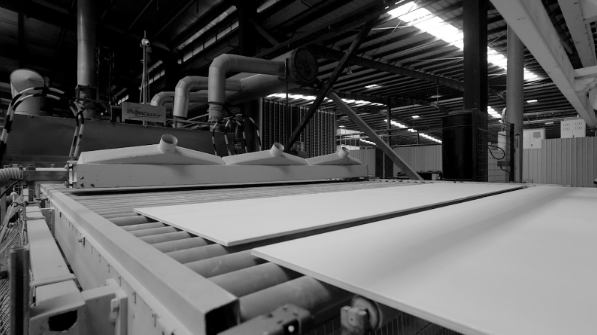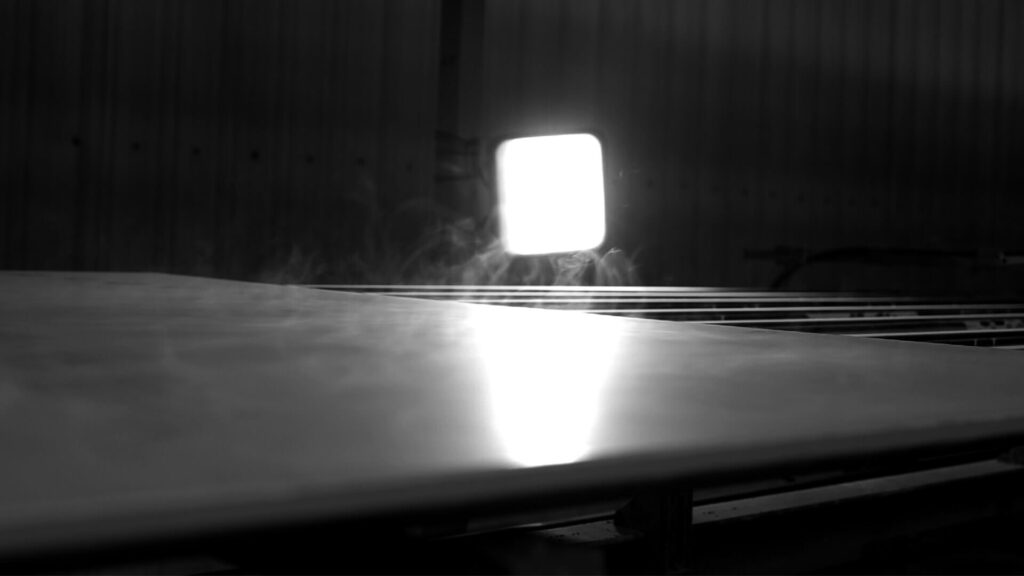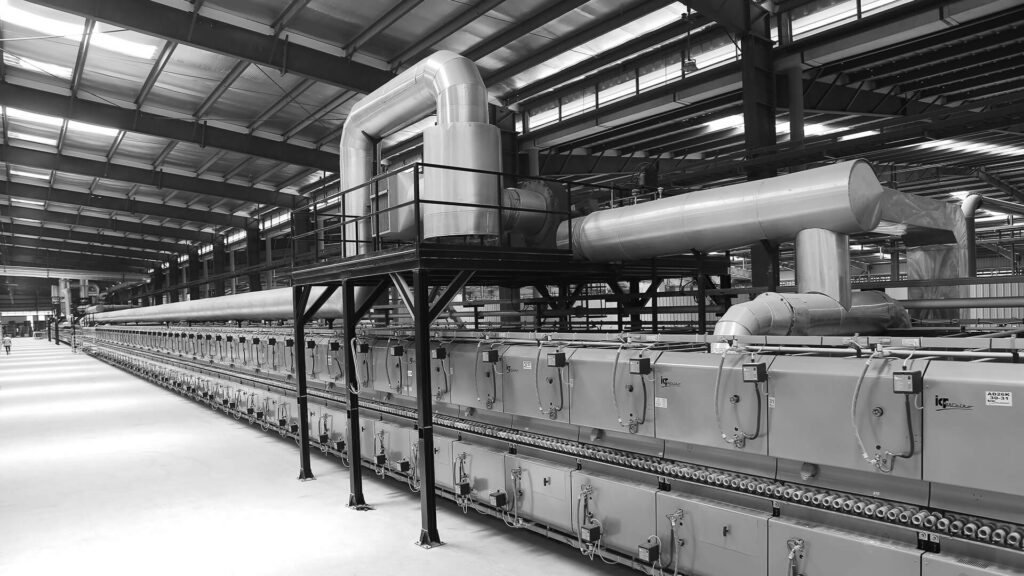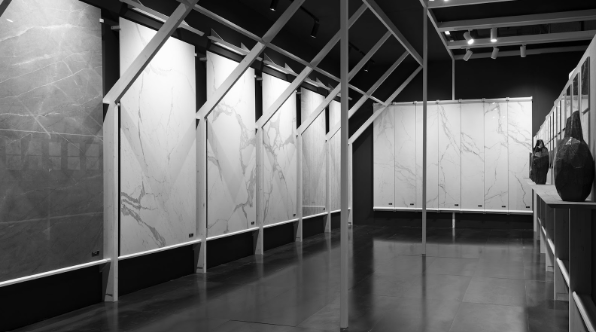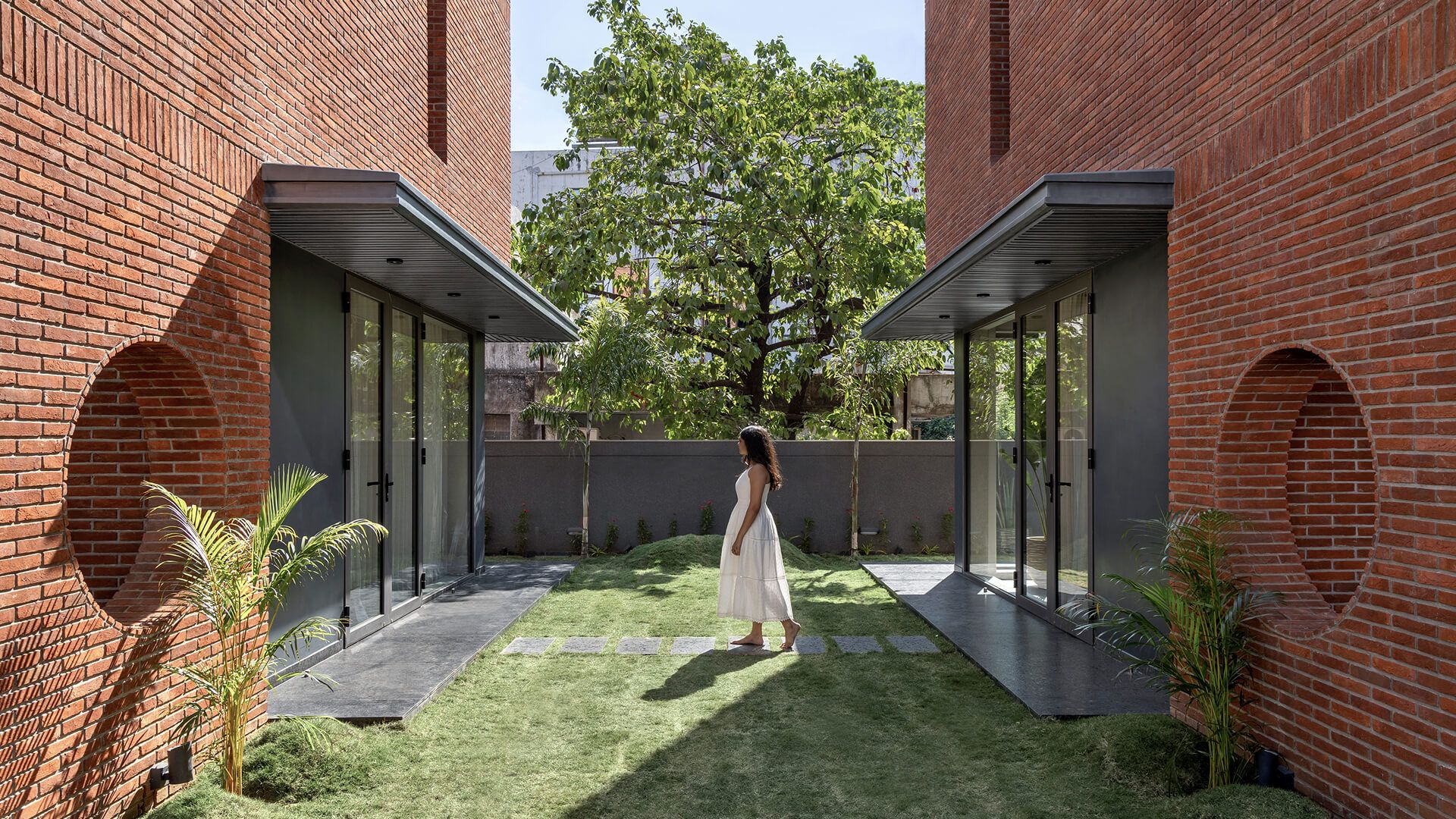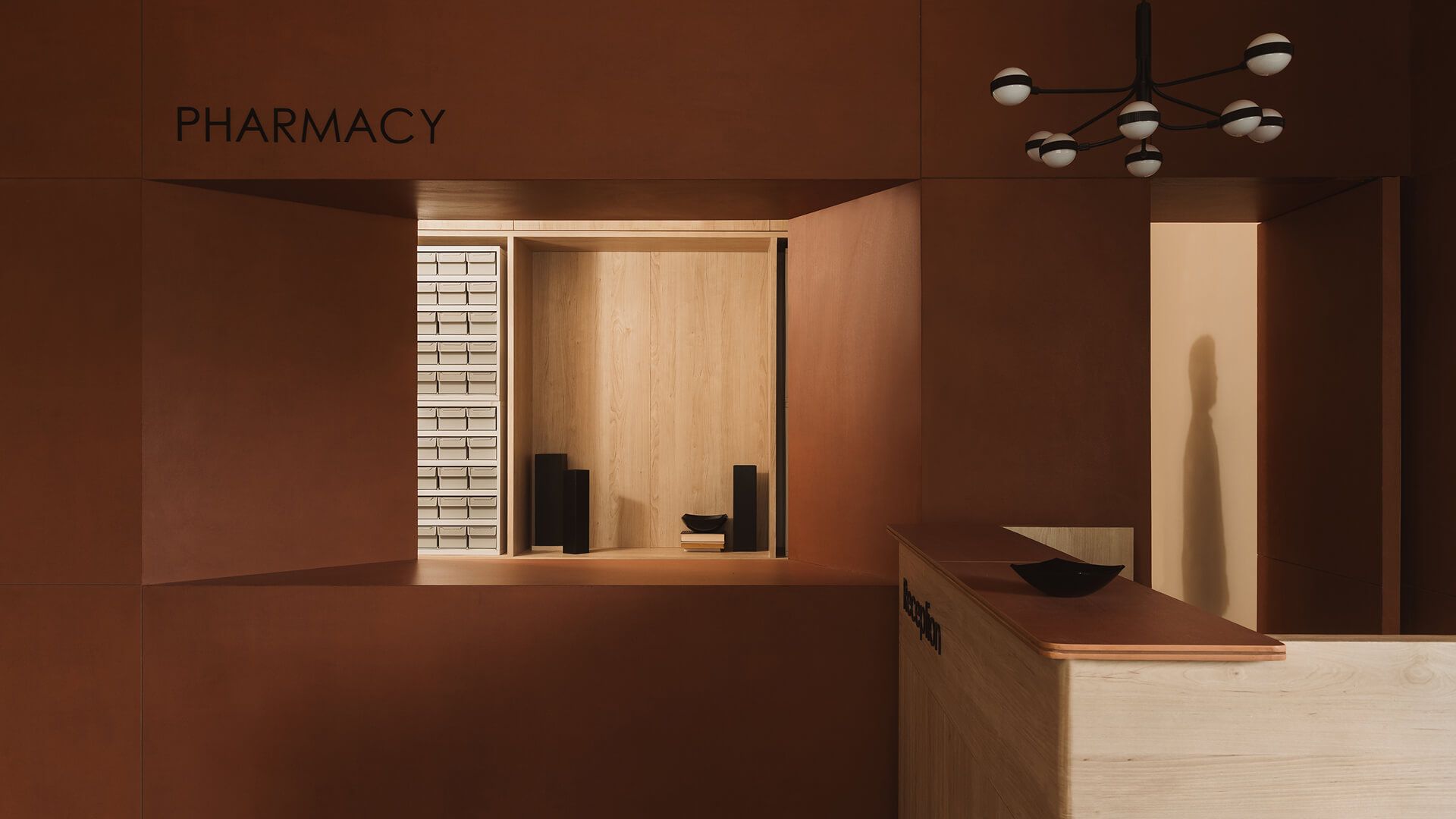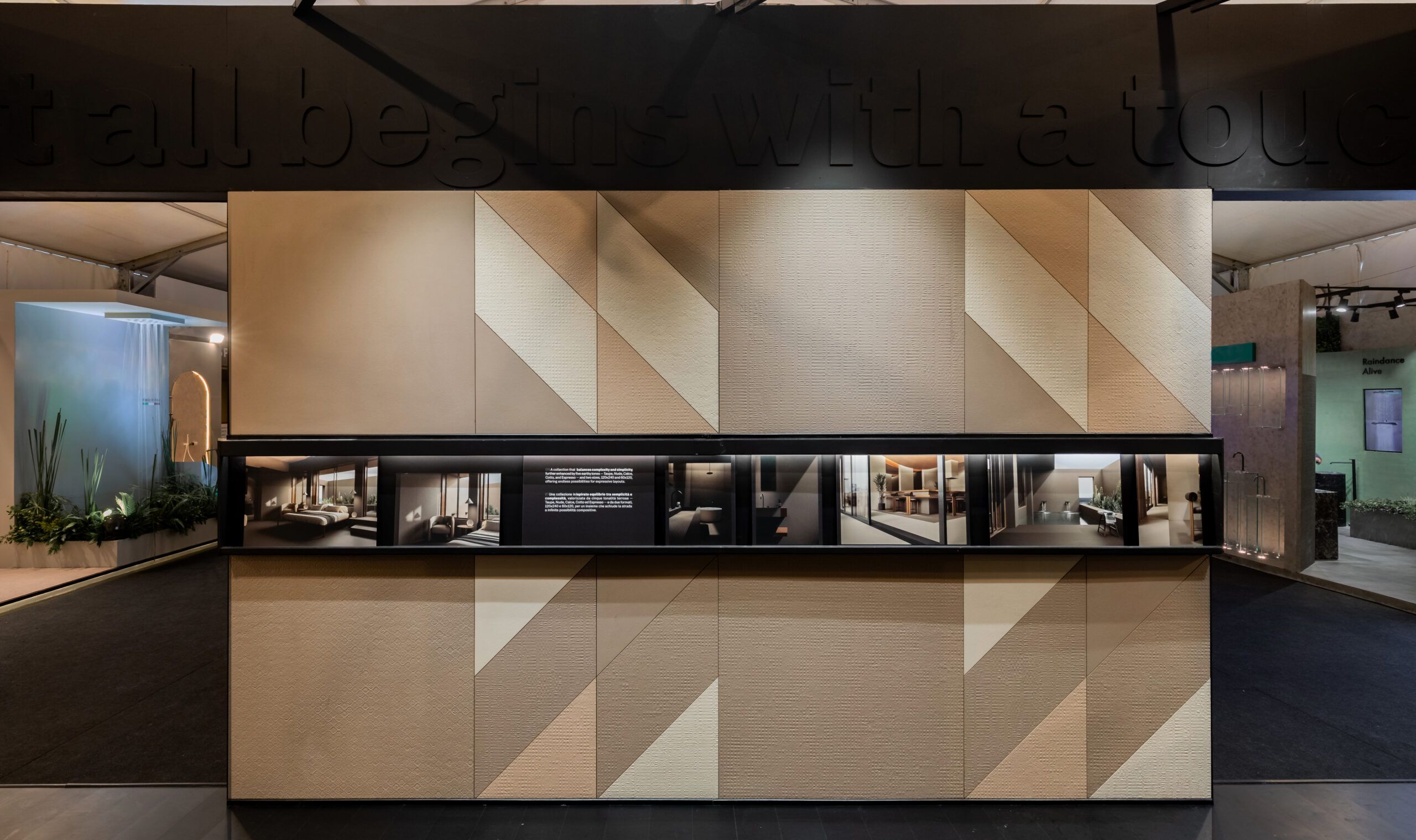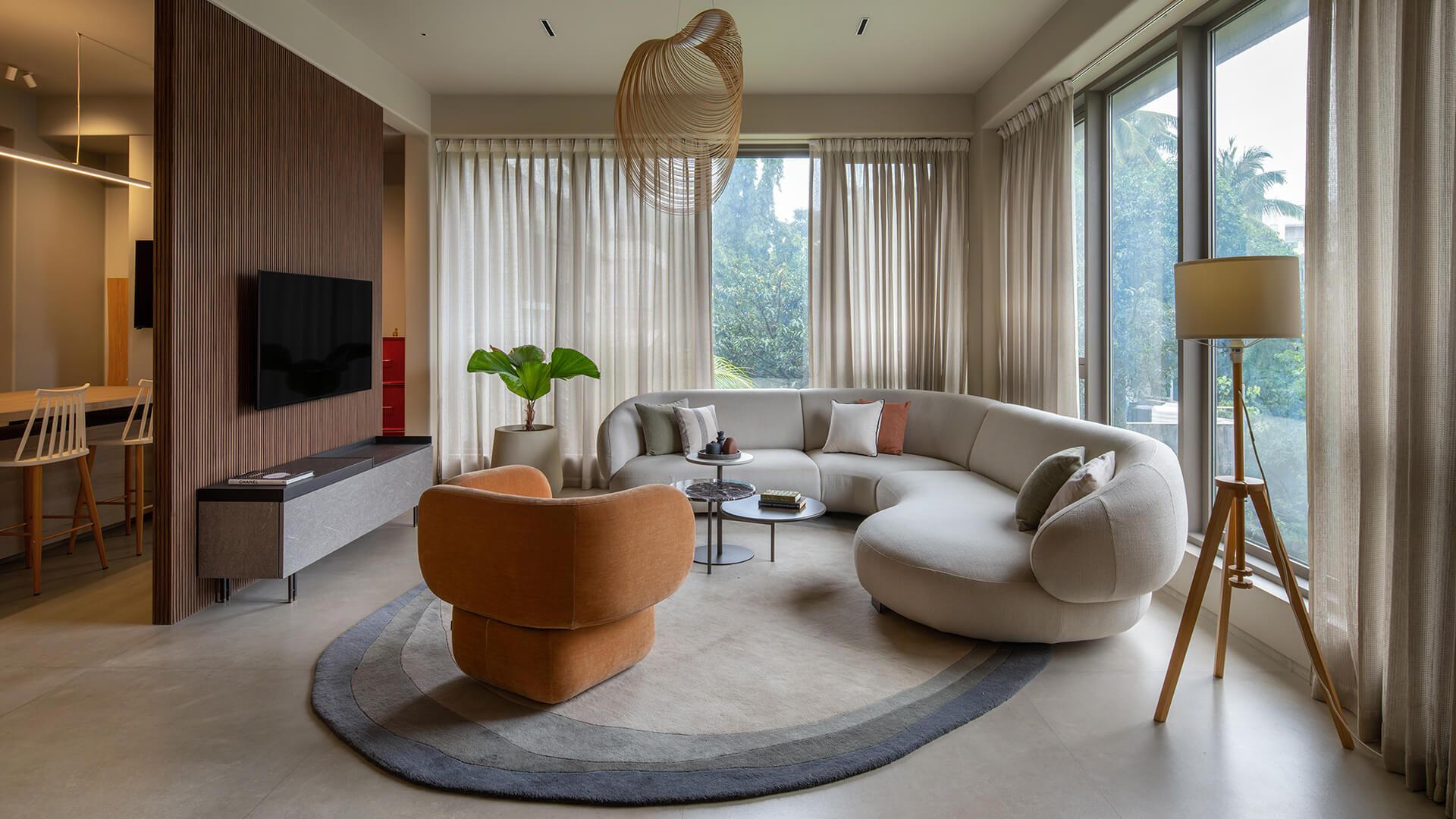Everyday the surfaces of every inhabited space are put to the test.
Whether in high traffic areas, such as boutiques or lobbies, or in domestic environments, as the dining room or bathrooms, every time we interact with a surface, a wall, a floor, a countertop, we can affect its life span and good shape over time.
This is why it’s crucial to select and install surfaces that can best respond to external inputs, remain flawless and maintain their best features over time. This is exactly where sintered ceramic surfaces shine.
The sintering process is the heart of the development and creation of high-performing, visually stunning porcelain tiles.
If you’ve ever admired with marvel the realistic veining of a marble-look tile and the versatility and durability of its surface, most likely you’ve witnessed the results of this specific industrial transformation process.
In this increasingly dynamic landscape of surfaces, sintered tiles are proving to be a smart choice compared to conventional materials such as natural stone, from many standpoints: sintered surfaces offer in fact a premium performance, and an extended life span of the product, without endangering the environment and landscapes with industrial-scale quarrying.In this article, we’ll explore what the sintering process is, how it works, and why it’s a cornerstone for premium ceramic tile production catering to contemporary architecture and interior design standards.
Sintering in porcelain tile production
To put it briefly, sintering is a transformation process that allows the creation of surfaces which nature could have made after thousands of years, with the added benefits of enhanced strength and low maintenance.
The sintering process uses advanced technology to mold finely milled raw materials together, such as minerals, clays, and feldspars, and press them with high pressure.
The sintering process reduces the porosity, it bonds the particles at the molecular level, creating a single, solid, and extremely dense piece of matter.
This method of transforming enhances the material’s
strength, durability, and resistance to wear and stress. Sintering ensures not only the structural integrity of the final product, but also a flawless finish that allows to capture the look and feel of natural marble, limestone or granite with astonishing realism.
From powder to solid: the steps of the sintering process
Raw material preparation
The sintering process is a carefully controlled thermal cycle that occurs in advanced industrial kilns. The following is a concise layout of how it exactly works:
The process starts with carefully selected high-purity, finely milled powders and materials.
These components are homogenized to ensure consistency in texture, color, and density.
Compaction and shaping
Once the desired blend is achieved, this is then pressed into tile form using high-pressure hydraulic systems (at approx. 44000 KN) to remove most of the air between particles, laying the foundation for sintering.
The Sintering Process
After this stage, the shaped compounds enter the proper sintering phase, which happens inside a high-temperature kiln (reaching up to 1200-1250°C) for approx 90 minutes. Here, the particles bond together at a molecular level, and cool down, creating a monolithic ceramic structure incredibly hard and dense.
Controlled cooling and quality inspection.
After the sintering, the tiles are allowed to slowly cool down to room temperature, to prevent thermal shock.
Each batch undergoes rigorous quality checks to ensure consistency, strength, and surface perfection. Now is the time for precision cutting, polishing or surface texturing, to add the final aesthetic touches.
Strength and sustainability at the core of premium surfaces
Sintering is the backbone of the premium ceramic tile industry. This process is much more than just a manufacturing technique, it’s what determines a superior ceramic performance.
Here’s what the sintering process provides to the final product:
- Unmatched strength and durability: sintered tiles and slabs have high mechanical strength. These surfaces are highly resistant to heat, stress, stains, chemicals and UV exposure, making them a long-term choice for every space, including high traffic areas and external facades.
- Porcelain-grade density: sintered tiles have extremely low porosity (< 0,1%) and therefore very low water absorption (< 0,08%), making them the ideal water resistant material for indoor and outdoor installations, including professional and domestic kitchen countertops, bathrooms and other wet areas like pool decks.
- Sustainable by design: sintered surfaces can be considered environmentally conscious manufacturing, because they don’t enforce large-scale quarrying. The sintering process encourages efficient material use by providing long-lasting products, reducing the need for replacements and lowering environmental impact over time. This modern process replaces the need for quarrying the original stones, an activity that contributed over the centuries to the disruption of entire habitats and severe landscape degradation across the world.
Why is sintering important for architects and designers?
- Freedom from tile format constrictions
Due to their strength and stability, sintered surfaces come in big slab sizes with small thicknesses, allowing for seamless design flow, something difficult to achieve with natural stone, which tends to have dimensional and unique irregularities.
- Hyper-realistic surface design
Nexion’s state-of-the-art digital printing and pigmentation techniques are the perfect combination for our sintered surfaces. Through these techniques, we are able to reproduce intricate and highly detailed patterns and veining, with lifelike precision.
- Unparalleled performance
You don’t have to choose between the high-performing sintered surfaces and the visual depth of the natural stone; you will have both, without the environmental cost of quarrying.
Sintered surfaces vs natural stones
| Feature | Sintered Tile | Natural Stone |
| Strength & Density | Extremely high | Varies by type |
| Porosity | <0.1% (non-porous) | Moderate to high |
| Consistency in finish | High | Naturally variable |
| Available formats | Eco-efficient | High quarry impact |
| UV & Chemical Resistance | Excellent | Varies |
| Maintenance | Low | Often requires sealing |
Timeless surfaces according to Nexion
At Nexion, we employ cutting-edge sintering technology to provide surfaces that blend natural beauty with engineered performance.
Whether you’re working on luxury interior spaces, exterior facades, or heavy-traffic public areas, sintered tiles will provide the aesthetic of the natural stone, the reliability of engineered material, and the confidence of a sustainable choice.
Choosing to employ sintered surfaces means choosing long-term value, technical credibility, and environmental responsibility.
As material innovation continues to shape the built environment, sintered surfaces stand out as a future-forward choice; one that empowers design without compromising performance. Looking to elevate your next project with the perfect combination of natural stone aesthetics and unparalleled performance?
Explore Nexion’s collection of sintered surfaces, and you will discover the common ground between innovation, premium performance, and timeless nature-inspired elegance.
